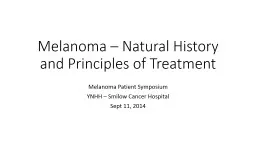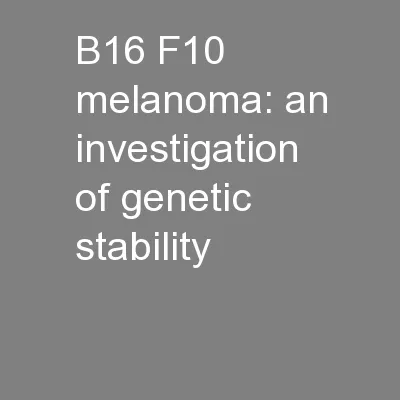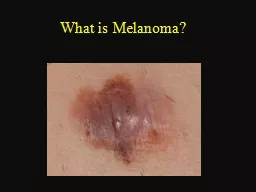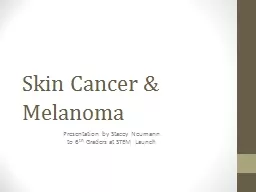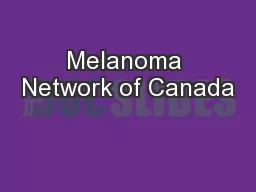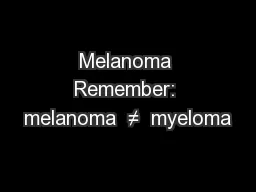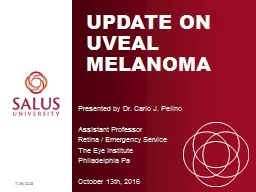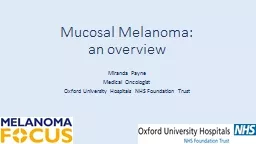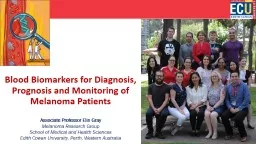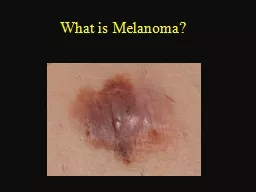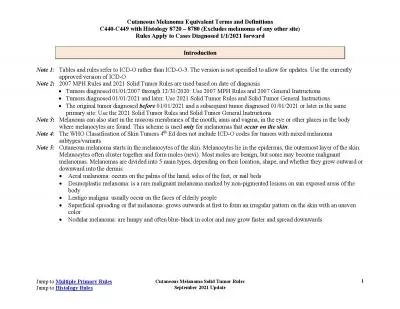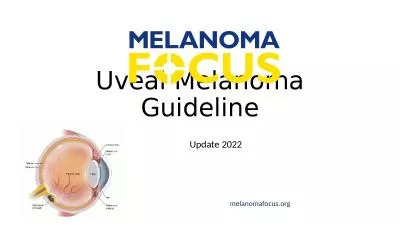PPT-Melanoma – Natural History and Principles of Treatment
Author : pasty-toler | Published Date : 2020-04-11
Melanoma Patient Symposium YNHH Smilow Cancer Hospital Sept 11 2014 What is Melanoma Cancer of cells which are responsible for all types of body pigmentation
Presentation Embed Code
Download Presentation
Download Presentation The PPT/PDF document " Melanoma – Natural History and Princi..." is the property of its rightful owner. Permission is granted to download and print the materials on this website for personal, non-commercial use only, and to display it on your personal computer provided you do not modify the materials and that you retain all copyright notices contained in the materials. By downloading content from our website, you accept the terms of this agreement.
Melanoma – Natural History and Principles of Treatment : Transcript
Download Rules Of Document
" Melanoma – Natural History and Principles of Treatment "The content belongs to its owner. You may download and print it for personal use, without modification, and keep all copyright notices. By downloading, you agree to these terms.
Related Documents

